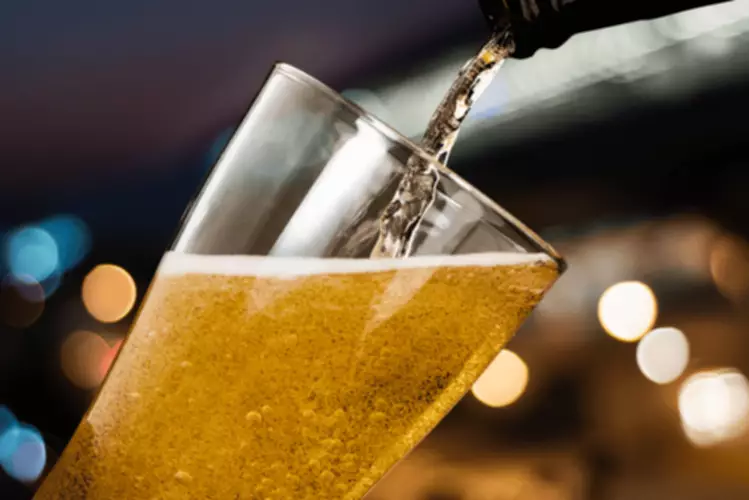
As with any other allergen, your body reacts to alcohol as a foreign invader and creates antibodies as a response, he explains. These antibodies trigger a release of histamines, causing red and itchy skin. Unfortunately, if the body can’t effectively process and break down these histamines, it creates a buildup, which can cause these uncomfortable skin conditions, he explains. Some people with Hodgkin’s lymphoma experience pain after drinking alcohol. Hodgkin’s lymphoma is a type of cancer that can affect your lymphatic system.
What to avoid if allergic to alcohol?

Alcohol allergy happens when the immune system mistakenly identifies alcohol as a threat and launches an attack that can affect the entire body. Alcohol intolerance can cause an immediate or delayed reaction, with delayed reactions sometimes occurring 20 to 30 minutes after alcohol consumption, according to the ME Association. In a few cases, alcohol intolerance can be a sign of a more serious problem. If you think you have it, talk with your doctor and find out what’s causing it. You may be more likely to have reactions to alcohol if you have any of these factors. Instead, they state that the data indicate that alcohol interacts with a component involving the body’s allergic response.
Complete a blood test if your allergist recommends it.
The best way to prevent a reaction is to simply avoid alcohol. Distilling a drink usually removes any naturally occurring yeast or yeast by-products from the liquid. Because of this, distilled spirits are generally safe for people with yeast allergies. These include proteins, enzymes, dairy products, molds, and ingredients used in the production of wine.
- Purchase the same tests your doctor orders and get insights into your health.
- Even drinking a small amount of alcohol (ethanol) causes unpleasant symptoms.
- In contrast, an alcohol allergy involves an immune system response and can be much more severe.
Conditions
They can range from mild to severe, according to Richmond, and may include runny nose, coughing, wheezing, itching or hives. More severe symptoms include swelling of the face, mouth, or tongue; nausea and vomiting; diarrhea; or lightheadedness. White wine tends to contain higher levels of sulfites than red wine and beer. If you have this variant, it causes your body to produce less active ALDH2. “Alcohol sensitivity” is a term that some people use synonymously with alcohol intolerance.
Management and Treatment
Therefore, if you have celiac disease or non-celiac gluten sensitivity, you’ll need to how to know if you are allergic to alcohol steer clear of conventional beer and some other drinks. Sulfites are an ingredient used to make beverages and foods last longer. They are found in a number of products, including wine and beer. The reason some people have an intolerance to sulfites is unknown, but both genetics and the environment could be contributing factors.

Alcohol allergies

If you have alcohol intolerance, drinking even tiny amounts of alcohol can cause you to flush, usually within 20 to 30 minutes of drinking. Severe flushing can be very uncomfortable, but it is not dangerous. People with alcohol intolerance react quickly to consuming alcohol. Two common symptoms are facial flushing, in which the skin on the face quickly turns red, and nasal congestion. Sulfites naturally found in wine and beer can cause asthma symptoms in people who are sensitive to sulfites. In rare cases, a reaction can be severe and lead to anaphylaxis.

If symptoms are getting worse, you have swelling, or you have breathing trouble, go to an ER. Follow your allergy action plan if you have one, which may include using an EpiPen. A sign that you may have an intolerance is that you have symptoms no matter what type of alcohol you drink.
Many foods, including red wine and aged cheese, are high in histamine. This is the same chemical involved in allergic reactions in the body. Sulfites are preservatives, and most countries permit their addition to alcoholic drinks such as beer and wine. However, some people may experience allergy-like reactions after consumption. It’s very difficult for consumers to know whether an alcoholic drink contains allergens or ingredients they’re intolerant to. That’s because in the UK, alcoholic drinks manufacturers don’t have to put an ingredients list or nutrition information on the label.
Corn Allergies and Intolerances
- To keep your risk as low as possible, avoid alcohol entirely.
- It typically occurs because of a genetic difference that makes the body unable to break down alcohol efficiently.
- Track allergy symptoms and prepare for a visit with a healthcare provider.
- The condition is often inherited from your parents and common in people of East Asian descent.
While most people can tolerate sulfites in foods, there are some who are especially sensitive to them and may experience an asthma attack. In rare instances, exposure to sulfites has been known to cause a potentially life-threatening, whole-body allergy known as anaphylaxis. If you experience headache, flushing, itching, or congestion after drinking red wine, it may be because you have histamine intolerance. However, a person is usually allergic or intolerant to certain ingredients in the drink, rather than the alcohol itself. An allergy or intolerance to alcohol is not always responsible for symptoms occurring after drinking alcohol. Symptoms are more likely to be a reaction to the ingredients in a drink, or the alcohol causing other types of allergies to worsen.
Charitable Care & Financial Assistance
Alcohol intolerance is more common and usually manifests as facial flushing, nausea, and a rapid heartbeat after consuming alcohol. This condition is often due to a deficiency in an enzyme called aldehyde dehydrogenase. In contrast, an alcohol allergy involves an immune system response and can be much more severe. Those who have an allergy or intolerance to wine should follow the directions of their healthcare provider and may be asked to refrain from drinking red wine. In some cases, a healthcare provider may identify an allergy to a specific ingredient or compound in wine, like grapes. If beer seems to be the issue, it’s probably the yeast, says Dr. Glatter.
